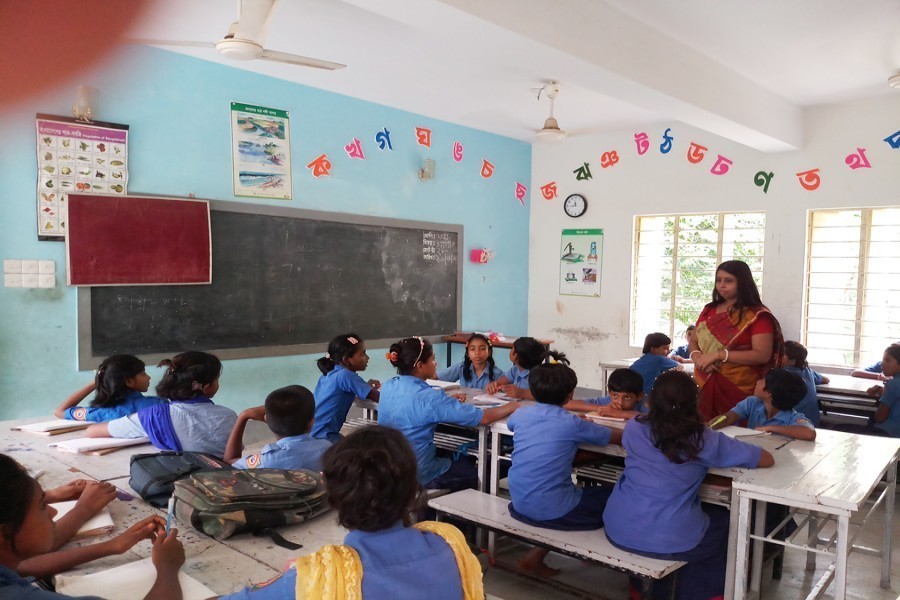The pandemic has compelled Bangladesh to continue the closure of educational institutions at a stretch for more than a year. The closure helps keep the transmission of the virus in the country at a lower level. The government has also correctly focused on lives and livelihoods, so improving health infrastructure and countrywide vaccination get the priority. This, however, side-lined education. So, millions of students are going to be the victim of the loss of another academic year.
In his budget speech at national parliament on June 3, Finance minister AHM Mustafa Kamal categorically said that 'the overall development of human resources including education and skills enhancement' is the fourth priority sector of the government. The first three priorities are health, implementation of the stimulus package and agriculture due to a structural change in the government's priority to combat the pandemic. Acknowledging the disruption of education due to Covid-19, he has mentioned steps taken by the government to continue the course curriculum on online platforms and television and radio. He has also announced a series of measures for the education sector and allocated Tk 719.53 billion for the fiscal year 2021-22 (FY22), an increase of 8.70 per cent over the revised budget of FY21.
Nevertheless, the budget speech does not mention anything about the loss of academic years and provide an outline on the gradual reopening of the educational institutions. There is also no mention of the widening digital divide in education and addressing the problem. Without reopening the educational institutions, it is almost impossible to stop another academic year's loss and reduce the digital divide.
Policymakers and officials concerned with education management are yet to go for some innovative or different approach on reopening the schools, colleges and universities. There is also no serious move to take some experimental steps in this regard. Experts, educationist, teachers, guardians and even students have already floated several suggestions for consideration. These include limited and rotated physical presence of teachers and students, weekly two or three days alternatively for different classes, the alternate opening of nearby schools and colleges, proper cleansing and sanitising of the school compounds, classrooms and toilets. Modes and patterns of reopening schools, colleges and universities will also be different.
The necessity of reopening educational institutions is for academic learning and test as well as bringing back students into socialisation slowly. There is also an urgent need to restrain their growing addiction to electronic devices. Many students suffer from eyesight problems due to attending online classes through mobile phones, tablets and laptops. Resumption of in-person communication and conversation with teachers and fellows is essential now. In this process, they will be able to share their joys and ventilate their feelings.
The Covid-19 has exposed the weakness of the country's health infrastructure and the drawbacks in the education system. Inadequate physical spaces, lack of playgrounds and unhygienic toilet facilities in most of the educational institutions have already turned those vulnerable to coronavirus. School students are also loaded with textbooks and tests where space for extra-curricular activities is minimal. A very few institutions keep a strong focus on ethics, moral values and disciplines. Now the pandemic is taking a heavy toll on the flawed and distorted education system. Bringing the students to classes carefully and gradually is the only option to contain the learning loss.


